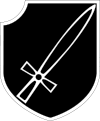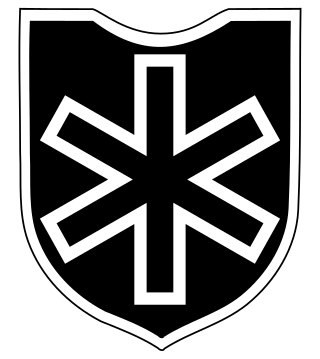
The 6th SS Mountain Division Nord was a World War II mountain infantry division of the Waffen-SS, the military wing of the German Nazi Party, primarily consisting of ethnic Germans along with some Norwegian and Swiss volunteers. It was the only Waffen-SS division to operate in the Arctic Circle.
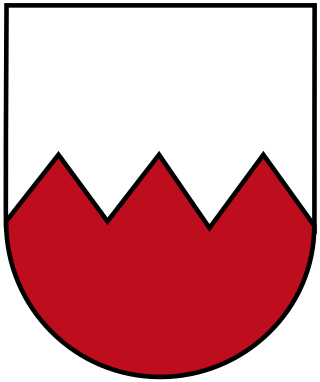
The German 73rd Infantry Division or in German 73. Infanterie-Division was a German military unit which served during World War II. The division consisted of more than 10,000 soldiers, primarily of the infantry branch, with supporting artillery. The division was only semi-motorized and relied on marching for the infantry units and horse-drawn transport for most of the support equipment, especially the artillery.

The 12th Panzer Division was an armoured division in the German Army, established in 1940.
The 1st Ski Division was a mountain infantry unit of the German Waffen-SS/Army trained to use skis for movement during winter. It was created on the Eastern Front in the autumn of 1943 in preparation for upcoming winter operations. It was enlarged into a full division in the summer of 1944. The division fought exclusively on the Eastern Front as part of Army Group Centre, including an approach to the Vistula river and during the retreat into Slovakia, southern Poland and the Czech lands, where it surrendered to the Red Army in May 1945.

The 5th Mountain Division was an elite formation of the German Wehrmacht during World War II. It was established in the Wehrkreis XVIII in October 1940, out of units taken from the 1st Mountain Division and the 10th Infantry Division. The unit surrendered to the U.S. Army near Turin in May 1945.

The 10th SS Panzer Division "Frundsberg" was a German Waffen-SS armoured division during World War II. The division's first battles were in Ukraine in April 1944. Afterwards, the unit was then transferred to the west, where it fought the Allies in France and at Arnhem. The division was moved to Pomerania, then fought south east of Berlin in the Lusatian area until the end of the war.
Azerbaijani SS volunteer formations were recruited from prisoners of war, mainly from the Soviet Union and the countries annexed by it after 1939. Nazi Germany organised them to fight against the Soviet Union.

The 14th Waffen Grenadier Division of the SS , commonly referred to as the Galicia Division, was a World War II infantry division of the Waffen-SS, the military wing of the German Nazi Party, made up predominantly of volunteers with a Ukrainian ethnic background from the area of Galicia, later also with some Slovaks.

The XV SS Cossack Cavalry Corps was a World War II cavalry corps of the Waffen-SS, the armed wing of the German Nazi Party, primarily recruited from Cossacks.
The 19th Panzer Division was an armoured division in the German Army, the Wehrmacht, during World War II. It was created from the 19th Infantry Division.

The 30th Waffen Grenadier Division of the SS(1st Belarusian), originally called the 30th Waffen Grenadier Division of the SS , was a short-lived German Waffen-SS infantry division formed largely from Belarusian, Russian, Polish, and Ukrainian personnel of the Schutzmannschaft-Brigade Siegling in August 1944 at Warsaw in the General Government.
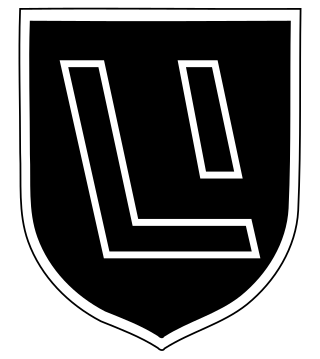
The 15th Waffen Grenadier Division of the SS , originally called the Latvian SS-Volunteer Division was an infantry division of the Waffen-SS during World War II. It was formed in February 1943, and together with its sister unit, the 19th Waffen Grenadier Division of the SS formed the Latvian Legion.
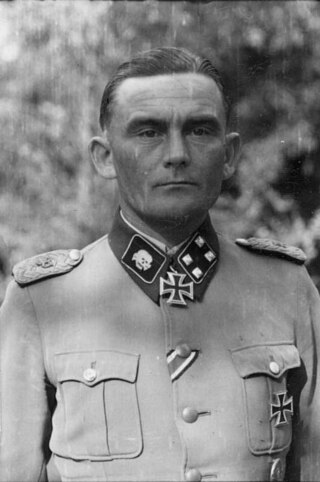
Georg Bochmann was a high-ranking commander and Oberführer in the Waffen-SS who commanded the SS Division Götz von Berlichingen and the SS Division Horst Wessel. He was a recipient of the Knight's Cross of the Iron Cross with Oak Leaves and Swords.

The 24th Waffen Mountain Division of the SS "Karstjäger" was a German mountain infantry division of the Waffen-SS, the armed wing of the German Nazi Party that served alongside, but was never formally part of, the Wehrmacht during World War II. At the post-war Nuremberg trials, the Waffen-SS was declared to be a criminal organisation due to its major involvement in war crimes and crimes against humanity. Named Karstjäger, the formation was one of the 38 divisions fielded by the Waffen-SS. Formed on 18 July 1944 from the SS Volunteer Karstwehr Battalion, its nominal strength was never more than theoretical and the division was soon reduced to the Waffen Mountain (Karstjäger) Brigade of the SS. Throughout its existence as a battalion, division and brigade, it was primarily involved in fighting partisans in the Karst Plateau on the frontiers of Yugoslavia, Italy, and Austria; the mountainous terrain required specialised mountain troops and equipment.

The 205th Infantry Division was a German infantry division of the Heer during the Second World War. It was initially known as the 14th Landwehr Division.
The LIX Army Corps, initially known as the Higher Command for Special Deployment LIX was an army corps of the German Wehrmacht during World War II. The formation was active between 1940 and 1945.
The I Cavalry Corps, initially known simply as the Cavalry Corps, or alternatively as Cavalry Corps Harteneck after its commander, was an army corps of the German Wehrmacht during World War II. It was formed in 1944 and existed until 1945.
The 270th Infantry Division was an infantry division of the German Heer during World War II.
The 273rd Infantry Division was a planned infantry division of the German Wehrmacht during World War II. Its deployment was attempted twice, once in 1940 and once in 1945. The former deployment was interrupted after the German victory in the Battle of France, and the latter deployment never came to full strength due to the imminent end of the war.
